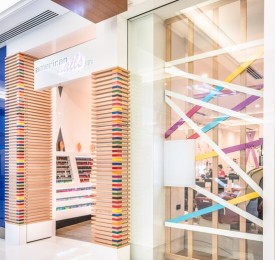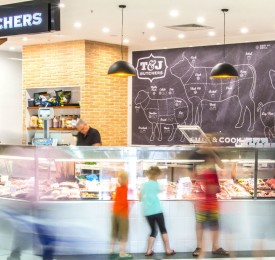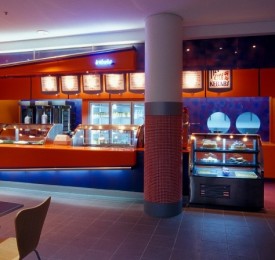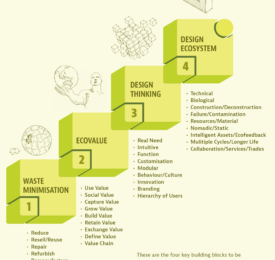Dr Philip Whiting FDIA Graphic Design
MCSD
Australia
| Email address | pwhiting@torrens.edu.au |
|---|---|
| Profile description | Dr Philip Whiting FDIA MCSD is a leading researcher and practitioner in the understanding and application of critical design thinking for innovation. He worked across the design disciplines of interior, product and visual communication design establishing a successful UK retail design research consultancy during the 1980’s working with major retailers including The Boots Company. He was also a design research consultant to the Institute for Consumer Ergonomics (ICE), Loughborough University where he worked with major retail manufacturers including 3M/Riker, Volvo as well as the Shell Petroleum Company. In Australia he joined Minale Tattersfield Bryce, working on significant retail developments for Lend Lease. Later working with Westfield, Stockland and Queensland Investment Corporation (QIC) under his own design research consultancy Zeroplus. Today he is a renowned design-based researcher with Torrens University Australia, part of the SEI group where he collaborates with business on the future development of sustainable retail built environments. His current research is focused on rethinking a circular interior design ecology model as the basis for sustainable retail development as a circular economy template. In this regard he has recently (January 2023) published a paper entitled – “A New Retail Interior Design Education Paradigm for A Circular Economy” in the highly regarded MDPI Sustainability journal |

American Nails
American Nails – Nailed it!
Background
The advent and popularity of Nail Bar Salons and Pedicures has created a glut of practical and functional environments that are at best disappointing and often reminiscent of typing pools or even sweat shops.
Our Role
Zeroplus designed a cost-effective shop-fit for American Nails and Spa developing a relatively small space into a visually exciting environment to dramatically improve the overall brand and user experience.
The Outcome
Our structured approach using a Design Thinking process provided the client with a playful design strategy to reposition the brand and strengthen performance for the future.

T&J Butchers
T&J Butchers – NEW MEATS OLD
Background
Butchers are an example of a typical saturated retail market sector. A total lack of differentiation makes it hard for customers to identify a suitable outlet that reflects both a clean modern environment and good old fashioned customer service. Every Butcher essentially sells the same range of products, tells much the same story and all with the same experience and lack of engagement.
Our Role
Zeroplus undertook a shop design rebranding programme for T & J Butchers in Westfield Shopping Centre. We defined the brand concept and positioned it in such a way to reinvent the very nature of the butcher outlet. This was achieved through a lively three dimensional design visual expression reflecting the new brand experience.
The Outcome
By mixing the traditional values of personal customer service from the past with the consumer needs and expectations of today, this new brand design has a fresh food attitude. The shop design provides a dynamic yet simplified customer service environment bringing the focus back to efficient and nutritional home cooked meals.

Alkan Kebabs
Alkan Kebabs – It’s a Wrap
Background
Alkan Kebabs became a design and branding opportunity to re-define and re-position the nature of Turkish Kebab fast food outlets. The client had a vision of a more contemporary looking outlet that moved away from the more predictable and traditional Turkish theme and culture.
Our Role
We provided the customer with an international & cosmopolitan environment for fast food. We set out to deliberately upset the customers visual equilibrium and appeal to the teen, the student and the young professional.
Outcome
The market for fast food kebabs had begun to mature to the degree where there was now a demand for a quality kebab product and the design had to reflect this as a unique brand concept. In addition, at the time there were many original design features within this design, including cost-effective and low maintenance use of glass partition walls, an energy efficient material both in terms of installation and use.

A New Retail Interior Design Education Paradigm for a Circular Economy
Since the advent of a circular economy, typical strategies for change have focused on circularising existing business models or developing new closed-loop ones, where design is understood as a service provider, adapting its processes accordingly. This understanding and application of design is problematical, constraining and misdirecting any potential for effective innovation in the future. Interior design methodology needs to be completely rethought to create a sustainable circular design ecosystem. The learning and teaching of the interior design process has its foundation in an unsustainable, traditional economy that operates in a closed linear sequence of design, specification and fit-out. An undergraduate retail interior design project highlighted the need to evaluate designing for a circular economy as an ecosystem, based on the 10 R’s leading to four building blocks for the learning and teaching of circular retail interior design. Through analysis of the nature and existing use of design within a circular economy, it is possible to conceptualise the deconstruction of the existing linear process of interior design pedagogy and rebuild that process as a sustainable circular retail interior design methodology. This paper identifies four key sustainable design principles as a foundation for a new education paradigm for a circular interior design ecosystem model.